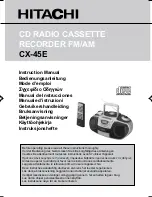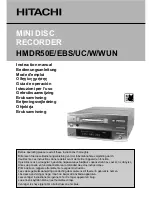
OPERATION
DEPTH OF CUT
• The depth of cut depends on the width, species, hardness, moisture content, grain direction, and grain structure
of the wood.
• The maximum depth of cut is 1/8” for workpieces less than 6” wide, and 1/16” for workpieces wider than 6”. The
wider the workpiece, the shallower the depth of cut should be. The harder the species of wood, the shallower the
depth of cut should be.
• The smaller the depth of cut, the better the finished surface. It is better to take multiple shallow passes on a work-
piece, rather than one deep pass; this is better for the motor and cutting inserts, and will prolong their lives.
• If boards are cupped or bowed, use a jointer to flatten them out, or take multiple shallow passes until the work has
one flat side. Once a level surface has been created, flip the workpiece and create parallel sides. It is easiest to do
this if you can rip-cut the boards into multiple pieces beforehand.
• As a rule of thumb, it is best to alternate sides of the board being planed until the desired thickness is reached. This
will result in the board having a more-uniform moisture content, since half of the total depth of cut has been taken
from each side. Any additional drying should not cause warping or cupping.
• Scrap wood is your best friend. Make a cut on a test piece to verify the finish produced, as well as the accuracy of
the depth of cut and the thickness of the finished product.
DEPTH STOP
The depth stop preset (Fig. 8 - 1) is a simple way to set the
desired thickness of a workpiece. Move the knob to the desired
finished thickness. For example, if you want a workpiece 1-1/4”
thick, move the knob to the 1-1/4” setting. The finished work-
piece will be 1-1/4” thick. This feature is best used when planing
multiple workpieces, in order to ensure that all workpieces have
a uniform thickness.
NOTE:
when adjusting the height of the rollercase, ensure the
depth stop preset is in the lowest (thinnest) position. Failure
to do so may result in damage to the depth stop preset or the
rollercase.
Fig. 8
1
13










































